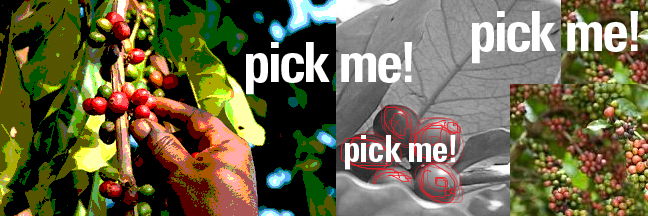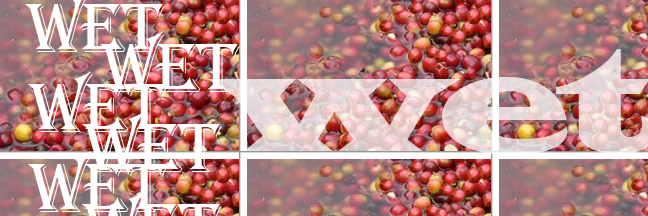Coffee processing is the method of removing the fruit and pulp of the berry, leaving the beans (aka seeds) to be dried. The method of processing is extremely important as it does affect the flavor the final product. To begin processing, the coffee cherries must be picked off the tree. This is usually done by hand, by one of two methods. If the coffee is strip-picked, the entire crop is harvested at one time, with the beans stripped off each branch. Because they contain both green and red cherries, these crops are generally used in cheaper, mass-produced coffees and are characterized by a sharper odor, more bitter flavor, and slightly higher caffeine content. Alternatively, if the coffee is selectively picked, only the red, ripe cherries are picked. Pickers return to their trees every 8-10 days, removing only the ripest beans. Because this method is obviously labor intensive, generally only the finer Arabica coffees are picked by the selective method.
Once the cherries are picked from the tree, they are either wet processed or dry processed. In wet process, the cherries are placed in water. The bad and unripe berries float to the top and are removed. The good cherries are pressed by a machine through a screen. A process of fermentation is used to loosen and remove the remaining pulp (this part of the process can leave the beans tasting fermented, even sour). In a final step, the beans are laid out to dry and the skin and parchment surrounding the beans is hulled off using a machine.
The oldest method of processing the beans is the dry processing method. After they are picked, the cherries are winnowed by hand to remove unwanted beans and particles. Then they are laid out to dry on patios for up to four weeks, and are periodically raked or turned by hand to prevent mildew. Coffee that is dried too long becomes brittle and will break easily during hulling, but coffee that is not dry enough may be harmed by bacteria and fungi. Therefore, it is vital that the beans be carefully monitored during the drying process before they are hulled, sorted, graded, and bagged. Most of the world’s coffee is processed using this method, although it is not practical in very rainy and humid regions.
And that, my friends, is how coffee is processed!



